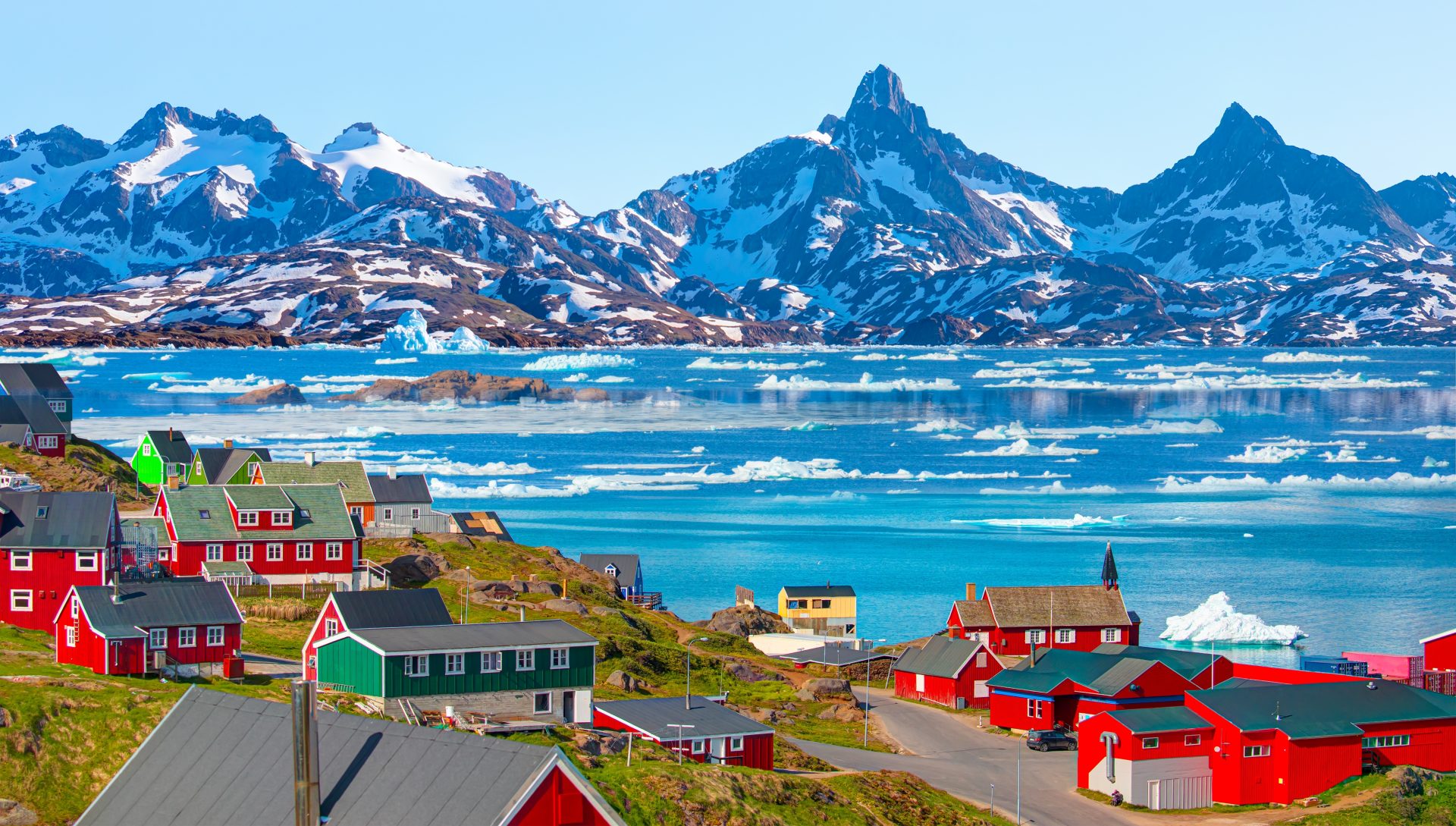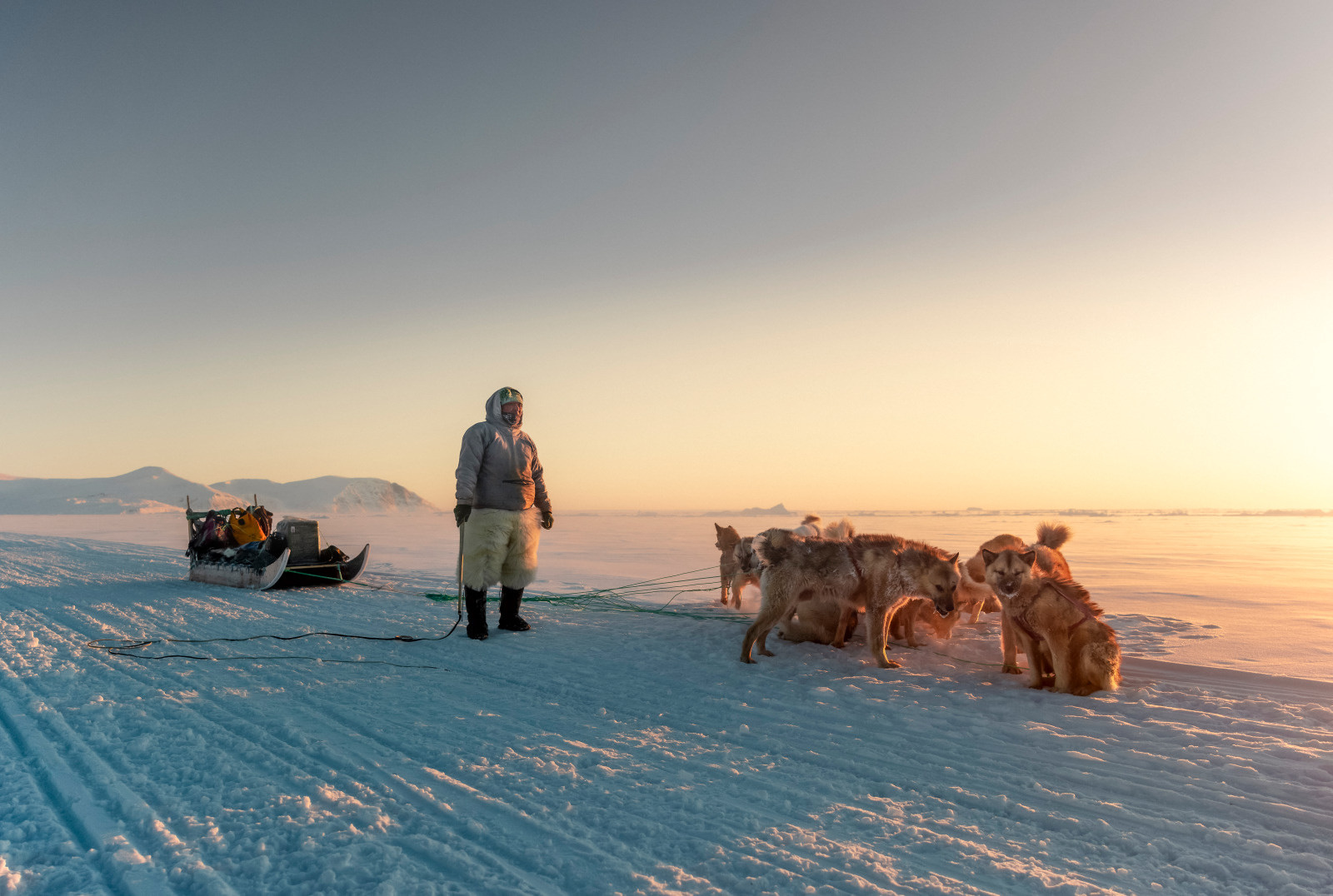
Greenland’s coastline is a paradox — vast yet intimate, remote yet deeply inhabited. It’s a place where towering glaciers meet colourful villages, where ancient Inuit traditions sit beside Danish influences, and where travellers find both adventure and insight.
Cruising along Greenland’s western fjords, guests encounter ice in all its forms: jagged bergs drifting silently, tidewater glaciers calving thunderously, and vast ice sheets that stretch into the horizon. But beyond the frozen drama lies a vibrant cultural presence. Towns like Ilulissat, Sisimiut, and Qaqortoq offer a glimpse into daily life in the Arctic — resilient, adaptive, and full of pride.

On shore, guests may visit local villages, meet artists carving soapstone or sewing sealskin, or attend performances of drum dance and throat singing. These are not museum pieces but living traditions, carried forward by communities with deep roots in their land. In every village, the juxtaposition of colourful homes against stark mountain backdrops is a visual metaphor for survival and creativity.
Expedition voyages often include chances to hike above fjords, kayak past sculpted ice, or simply sit in silence as whales surface nearby. But what leaves a lasting mark is the warmth of the Greenlandic people — welcoming, candid, and open to sharing stories of life on the edge of the ice.

Onboard, cultural interpreters may join the voyage to provide context — not only about history and language but about the challenges of climate change, modernisation, and identity in a rapidly shifting Arctic. It’s a layered experience: the sublime beauty of the natural world paired with the complexity of human connection.
For many, Greenland is the most surprising part of their Arctic journey. It’s not just wild — it’s alive. And in that aliveness, travellers find something rare: a destination that isn’t defined by remoteness, but by its capacity to reveal both nature and humanity in raw and radiant form.